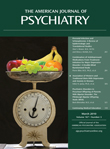Handbook of Psychiatry in Palliative Medicine, 2nd ed.
Potential readers of this book no doubt will be concerned about what dying people want, which is a theme examined throughout the book. It is discussed and answered by Khul in his chapter on this subject as follows:
"People at the end of life want adequate pain and symptom management, and desire to participate in a process of clear decision making to achieve a sense of control, to relieve burden, to be affirmed as a whole person, and to strengthen their relationships with loved ones."
This book offers an excellent introduction to those who have any interest in palliative care or who, from time to time, deal with issues of death and dying. It will even be more useful to those who work in the field on a regular basis. It certainly is a necessary reference book to both of these groups of professionals, and it provides in-depth discussion on just about all the pertinent subjects in this fast-growing specialty. While the title of the book indicates that psychiatric issues are the main focus, the editors have used a wide-angle lens to examine this subject. In addition to psychiatrists, other physicians, nurses, and any mental health professional will feel comfortable with this book.
The volume editors are well-known sensitive giants in a field that requires a balance of scientific evidence-based thinking and empathic humaneness, which are not easy to combine. They have brought together on the pages of this book outstanding contributors who embody these characteristics and who know their subject matter extremely well. There is some duplication and overlap, but some subjects, such as existential approach to patients, benefit from multiple discussions.
The first edition of this book came out 8 years ago, and many new chapters have been added to this second edition. These new contributions have homed in on hospice, persons with serious mental illness, patients with substance use disorders, and patients with personality disorders. They also include a new look at interdisciplinary teamwork, cultural diversity, families, spiritual issues, and an interesting view of special care considerations for the seriously ill older patient.
Many of the chapters will take the reader to the cutting edge of science, as well as address clinical and ethical issues. You will learn that two renowned ethicists, Pellegrino and Sumansy, believe that intensive comprehensive palliative care is the rational alternative to euthanasia and physician-assisted suicide.
Many of us who did not have the opportunity to train under or work with Ned Carsem will get an invaluable view of his clinical insight and very humane approach to patients in his chapter on the management of the patient at the end of life. Examples of some of the questions he often asks patients and discusses in his outstanding chapter are the following: "As you look back, what are you proudest of?" "Did you play mischievous pranks on others?" What are the most meaningful joys in your life? The things that you wish you could do again?"
There is a comprehensive chapter on everything you might want to know and should know about diagnosis and management of depression in palliative care by Wilson, Lander, and Chochinov. They provide a very good review of medications for depression but also state that medication without ongoing contact is often experienced as abandonment and is not an acceptable approach. Roth and Massie do a similar good job with anxiety in palliative care, noting that between a quarter and a third of patients with advanced cancer receive anti-anxiety medication during their hospitalizations. They also make a plea for testing new psychotherapies (such as meaning-centered or dignity-conserving therapies) for effectiveness in decreasing anxiety in the palliative care setting. Breitbart's vast experience with AIDS and cancer is reflected well in the chapters on delirium and pain management, in which he is the lead author. Throughout the book, studies are cited, reporting that as many as 90% of patients with terminal cancer or other advanced diseases experience unrelieved pain. The likelihood of insufficient treatment of cancer pain is higher if the patient is female, elderly, a member of an ethnic minority, a child, or a substance abuser, according to one study cited. An equally high percentage of disturbing pain has been reported in patients with AIDS.
The full spectrum of psychotherapy approaches is covered comprehensively in various chapters, including various psychodynamic, cognitive-behavioral, narrative-writing, and family-focused therapies and group therapy. In regard to this latter treatment, Spiegel and Leszcz discuss the follow-up of Spiegel and colleagues' early groundbreaking research, which raised the possibility that psychotherapeutic group interventions may affect survival time as well as quality of life. Subsequent research has been mixed in this regard, but the authors cite a recent trial's finding that among 227 women with primary breast cancer, those randomly assigned to a 1-year program of training in active coping, communication skills, and symptom management had significantly lower rates of relapse and mortality at 11-year follow-up.
Countertransference is discussed by Vachon and Muller in their chapter on burnout in staff working in palliative care, as well as by Stuber and Bursch in their chapter on psychiatric care of the terminally ill child, and it is also covered in Kissane's chapter, which included coauthorship by the two coeditors. It would probably be quite worthwhile if the editors in future editions could coax more discussion of how the experienced contributors to this book handle their personal reactions to working in this field.
However, do not wait for the next edition, as this book should be currently in the hands of anyone who does work in consultation-liaison psychiatry or any aspect of palliative care. You may be able to Google some of the factual material contained here, but you can never find the empathic, in-depth presentations and discussion on the Internet that are packed into the 592 pages of this book.



